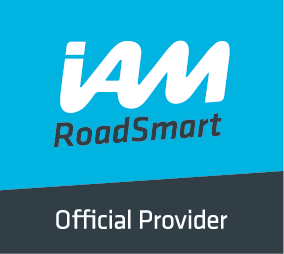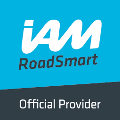Read our useful driving tips provided by Mark Farnworth, Group Vice-President or from other Group members or IAM RoadSmart where stated.
Browse by topic (click to view and then press back arrow)
ABS, Books, 'Automatic' Gearboxes, Dual carriageways, Country driving, Eco driving, Green traffic lights, Handbrake, Horses, Indicating, Motorway driving, Observation, Overtaking, Roundabouts, Signalling, Spoken thought, System of Car Control, Terminology, Town Driving, Traffic lights, Vehicle balance
Eco driving
EcoSafe-driving is about driving in a way that suits you, your car and the environment and minimises risk to yourself and others. It is driving to reduce fuel consumption, greenhouse gas emissions, accident rates and noise levels – therefore having a positive impact on both you as a driver and the environment.
The Benefits:
Environmental
- Can reduce use and demand for non-renewable natural resources (fuel economy).
- Can reduce greenhouse gasses Helps improve overall air quality.
- Can reduce ambient noise levels
- Reducing the need to change tyres and brake pads so often will also benefit the environment.
Personal
- Contributes to preserving the environment.
- Reduces running costs, less fuel/lower spend on vehicle maintenance and lower insurance costs.
- Reduces fuel use by an average of 30%
- Can reduce stress · Can reduce vehicle wear and tear.
- Reduces the risk of you being the cause of an accident
Before you start driving – Refueling
- Where possible refuel at night; fewer hydrocarbon vapours when it is cool.
- Make sure you fully tighten your fuel cap. Up to 30 gallons of fuel can be lost annually due to evaporation when the fuel cap is not fully tightened.
- Try to find a competitive price in a forecourt. Refueling should be a planned process. Look for competitively priced fuel in your local area. Avoid motorway service stations!
Before setting off
- Get plenty of rest before a journey. An alert driver is in better control of themselves and their vehicle. You are likely to be much calmer and less prone to road rage, erratic driving and heavy braking.
- Plan your journey. Three jobs in one trip is better than three separate trips.
- Consider if the journey is necessary. For short distances try walking or cycling.
- Avoid areas of congestion. Check traffic and travel news before you set off, as it may be advisable to avoid a certain route. The DSA website is a good place to get this information.
Vehicle Preparation
- Get rid of excess weight. Clutter in your boot or on the back seat is extra weight that your engine must carry around. You can save fuel and reduce emissions by removing things such as buggies, golf clubs, tools, paperwork.
- Reduce aerodynamic drag. 50% of the energy required for motorway speeds is used to overcome wind resistance. Becomes even greater when roof racks and other items are attached to the car.
Vehicle Maintenance
- Regularly check that all tyres are at the correct pressure. Every 6 p.s.i. under inflation increases fuel consumption by 1%. Incorrect inflation produces tyre wear.
- Keep your engine clean. Carry out the recommended maintenance checks.
- Where possible use energy-conserving motor oils, fuels with good detergent additives and maintain appropriate levels of oil, transmission fluid and coolant levels.
Attitude
- Recognise your own capabilities and limitations as well as those of your vehicle.
- Accept and allow for the mistakes of others. · Have a positive attitude to the Highway Code and the Law.
Skills
- Apply your concentration to the task of driving.
- Good observation gives warning of dangerous situations.
- Anticipation gives time to react.
- Good planning allows you to drive in the correct position, at the correct speed and in the correct gear at all times. This increases safety and reduces fuel consumption.
Concentration
- Concentrate on the task in hand.
- Don’t use mobile phones when driving.
- Don’t read maps etc when driving.
- Allow plenty of time for the journey.
- Plan your journey before you start. · Long distance driving - 15 minute break every two hours.
- Consider overnight stays if long journeys and long working days - tiredness kills!
Hazard awareness/planning and anticipation: Identify hazards early, allowing adequate time to react – this will result in braking and acceleration that is smooth and progressive. Maintain space around your vehicle and drive calmly.
Keep moving
An engine has to work hard to move a stationary car. When approaching a roundabout or junction try to get an early view and continue if safe to do so. Engine braking when possible: e.g. traveling downhill. With your foot off the accelerator the engine needs little, if any, fuel. Never coast to save fuel; vehicle control must not be compromised.
Stopping the engine: When you are stuck in traffic or waiting for someone, the engine is idling so you are wasting fuel and adding to CO2 emissions. If you are likely to be at a standstill for a while, simply switch off your engine.
Best when hot: Low speed maneuvering increases fuel consumption. When you park up, position yourself so that it will be easy to drive away when the engine is cold.
Vehicle Control
Start/moving away: Try to avoid excessive revving when starting your engine and moving away.
Appropriate use of speed: Ensure that your speed is appropriate to the road, traffic and weather conditions. Don’t exceed speed limits. Inappropriate speed can reduce fuel consumption and increase emissions.
Gears: It is not always necessary to change up or down through each gear; try skipping gears e.g. 2nd to 4th or 5th to 2nd. As soon as conditions allow, use the highest possible gear, without making the engine struggle.
Accelerator: Use the accelerator smoothly and progressively. When appropriate take your foot off the accelerator and allow the momentum of the vehicle to take you forward. Avoid pumping the accelerator as this uses more fuel.
Tackling Bends
- Assess severity of bend in good time.
- Consider the best position on approach to improve safety margins.
- In advance of bend reduce speed to what is required (check mirrors before reducing speed).
- Select gear most suited to your speed.
- Drive through bend at constant speed for good vehicle stability and to minimize wear on tyres. When the view opens up smoothly increase speed by progressive use of the accelerator.
Speed Limits
- The higher the speed the greater the fuel consumption. Vehicles have the best fuel consumption when they are not being driven! The driver has to reach a compromise between reasonable progress and fuel usage.
- Driving at speed higher than the speed limit is illegal, potentially dangerous and wastes more fuel than necessary.
Timing and Flow
- Do you make reasonable progress on straight, traffic free, dry roads? If safe to do so, are the gears used efficiently when accelerating away from bends?
- Are far distance views continually sought - looking across fields for road route, monitoring of buildings ahead for potential areas of speed reduction, looking at tree lines, telephone poles?
- Moving and stationary obstructions: do you see them at the first opportunity, position for them in good time and pass them decisively?
- At junctions, traffic lights and roundabouts do you try to get early views so as to keep your car moving as much as possible?
- In traffic flows are you looking at least 2 or 3 cars ahead to recognise early vehicles turning to minimise ‘stop-start’ driving?
- Do you drive at a steady speed in areas of speed bumps/ramps?
By Mark Farnworth
Disclaimer: Driving is never a black and white activity, but full of grey areas, therefore neither I nor my fellow Observers in the St Helens & District Group of Advanced Motorists are liable for any consequences you may experience as a result of reading our advice. You are the driver. You should be in control of your vehicle at all times.

